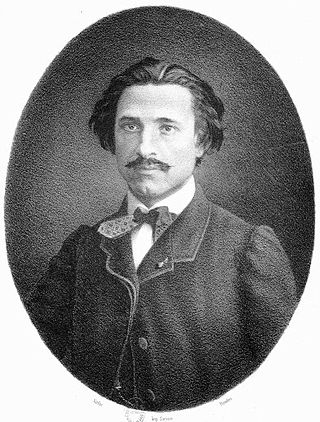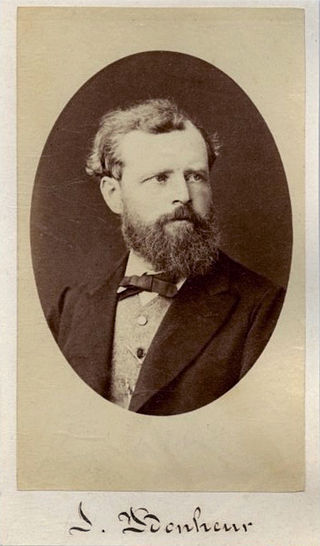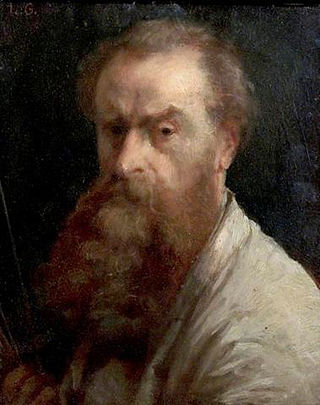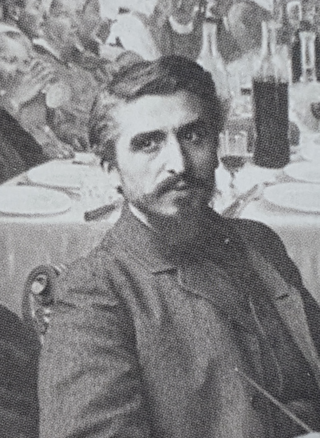Works

- Bust of Michel Chevalier
- Liseuse, exhibited at the 1850 Salon
- L'Ecorché, exhibited at the 1857 Salon, Musée d'Anatomie de Montpellier
Alphonse Lami (22 June 1822, Paris-17 July 1867, Alexandria) was a French sculptor and Egyptologist of Italian descent.
He was the son of François Lami (illegitimate son of prince Francesco Borghese) and Louise Hélène Heim (granddaughter of Jean-Baptiste Nicolet. He joined the Ecole des Beaux-Arts on 7 October 1846, studying under Abel de Pujol and Francisque Duret. He first exhibited at the Paris Salon in 1850 with a marble statue entitled "Liseuse". He then went to Egypt where from 1852 to 1853 he took part in the excavation of the Serapeum of Saqqara, which were headed by his friend Auguste Mariette. Returning to Paris, he married Alexandrine-Marie Bidauld (granddaughter of the rural painter and member of the Académie des Beaux-Arts Jean-Joseph-Xavier Bidauld) in 1853 - their son Stanislas Lami was a noted sculptor and art writer - and devoted himself to studying artistic anatomy and produced a flayed or écorche figure digging with a shovel, which he exhibited at the Salon in 1857. This work was also presented at the Académie des Sciences and was the report of an ecology written in the name of MM. Claude Bernard, Pierre Rayer, Horace Vernet and Jean Louis Armand de Quatrefages de Bréau. Later, in 1861, Lami published an album of engravings after this écorché under the title "Myologie superficielle du corps humain". Lami was made a knight of the Légion d'honneur on 12 August 1859.
In 1865, Alphonse Lami took part in the scientific commission sent to Mexico by the ministry of public instruction. Suffering from a liver disease he had caught from his stay in the tropics, he unwisely undertook a new trip to Egypt on his return to France from Mexico. He arrived in Alexandria when his condition suddenly worsened and he died there in July 1867.


Jean Alexandre Joseph Falguière was a French sculptor and painter.

Antoine-Louis Barye was a Romantic French sculptor most famous for his work as an animalier, a sculptor of animals. His son and student was the known sculptor Alfred Barye.

Aimé-Jules Dalou was a 19th-century French sculptor, admired for his perceptiveness, execution, and unpretentious realism.

Paul-Jacques-Aimé Baudry was a French painter.

Louis-Simon Boizot (1743–1809) was a French sculptor whose models for biscuit figures for Sèvres porcelain are better-known than his large-scale sculptures.

Aimé Nicolas Morot was a French painter and sculptor in the Academic Art style.

Jean-Jules Allasseur was a French sculptor, a pupil of Pierre-Jean David called David d'Angers at the École des Beaux-Arts, Paris, who produced portrait sculptures, memorial allegories and decorative architectural sculpture for official commissions under the Second Empire. He was made a chevalier of the Legion of Honor, 7 August 1867.

Henri Alfred Marie Jacquemart, often known as Alfred Jacquemart, was a noted French sculptor and animalier. He usually signed his works: A. Jacquemart.

Charles Auguste Arnaud, known as Auguste Arnaud was a French sculptor.
Stanislas Lami was a French sculptor and art historian.

Louis Pierre Henriquel-Dupont was a French engraver. His students included Charles Bellay, Jean-Baptiste Danguin, Adrien Didier, Alphonse and Jules François, Adolphe-Joseph Huot, Achille and Jules Jaquet, Jules Gabriel Levasseur, Aristide Louis, Louis Marckl, Isidore-Joseph Rousseaux, Abel Mignon and Charles Albert Waltner.

Isidore Jules Bonheur, best known as one of the 19th century's most distinguished French animalier sculptors. Bonheur began his career as an artist working with his elder sister Rosa Bonheur in the studio of their father, drawing instructor Raymond Bonheur. Initially working as a painter, Isidore Jules Bonheur made his Salon debut in 1848.

Charles Louis Gratia was a French painter best known as a pastel artist. He became well-known for his portraits during the July Monarchy (1830–48), but after the fall of the monarchy moved to London, England in 1850. After struggling at first, since he was foreign and pastel was an unfamiliar medium, he became recognized and made portraits of many prominent people including Queen Victoria. He returned to France in 1867, and continued to submit work to the Paris Salon until 1895. In his last years he was unable to compete with photography and with the Impressionist painters, and died in poverty.

Jean-Baptiste-Antoine Lassus was a French architect who became an expert in restoration or recreation of medieval architecture. He was a strong believer in the early Gothic architecture style, which he thought as a true French and Christian tradition, and was opposed to the classical Graeco-Roman styles promoted by the academic establishment.
Jean-Baptiste Jules Trayer was born in Paris in 1824 and died in 1909. He was a French painter. He signed his works "Jules Trayer".

Henry d'Estienne was a French painter and a member of the Académie des Beaux-Arts.

Jean-Pierre Laurens was a French painter; primarily of figures and portraits.
Louise Astoud-Trolley was a French sculptor and painter.
Pierre Scheemackers was a sculptor in mid-18th century Paris.